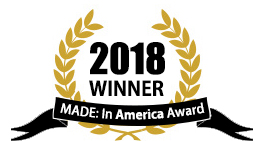Cleaning, Disinfecting and Sterilizing Plastics
General Cleaning
Washing Plastics with a Mild Detergent is sufficient for most general applications. Be sure to rinse with tap water, and then rinse again with distilled water. Most plastics, particularly the polyolefins (PPCO, PP, PMP, LDPE, and HDPE), have non-wetting surfaces that resist attack and are easy to clean. Do not use abrasive cleaners or scouring pads on any plastic. Do not use strong alkaline cleaning agents with polycarbonate (PC).
In considering methods for sterilization procedures, it is important to differentiate between sterilization and disinfection. Sterilization kills all viable microorganisms. Disinfection only reduces the number of viable microorganisms. Commonly used disinfectants include alcohol, iodophors, quaternary ammonium.
A Quick and Effective Method of Disinfecting Plastic Material
- Wash the container: Wash with anti-bacterial dish soap and hot water. The soap will immediately kill surface bacteria but may not guarantee complete sterilization; combining this will another method below is more effective. Use a non-diluted alcohol rinse. Both rubbing alcohol and grain alcohol kill bacteria on plastic surfaces.
- Soak the plastic: Soak container in a bleach-water solution of about 5 to 10 percent bleach. Bleach will not take long to disinfect, so the soaking time is minimal.
- Heat plastic: This can be done in a hot dishwasher rinse, but more effective is the microwave. Wet the plastic container first, as the interaction between the microwave's heat and water is what causes sterilization. Place the container in a microwave on high power for approximately two minutes. Both the dishwasher and microwave can melt plastic, however. Polypropylene plastics are strong and withstand high heat.
- Place plastics under a UV lamp: Ultraviolet sterilization is a safe, non-heated method used widely in food processing, laboratories and water treatment. Although a UV lamp is not the most common kitchen or garden tool, UV lamps are commercially available.
Why Sterilize Plastic?
Contact Milwaukee Dustless® today to receive a custom quote or to learn more how our products can fit your applications!

ALL RIGHTS RESERVED
WEBSITE DEVELOPED BY: EMSAR DESIGN LTD


